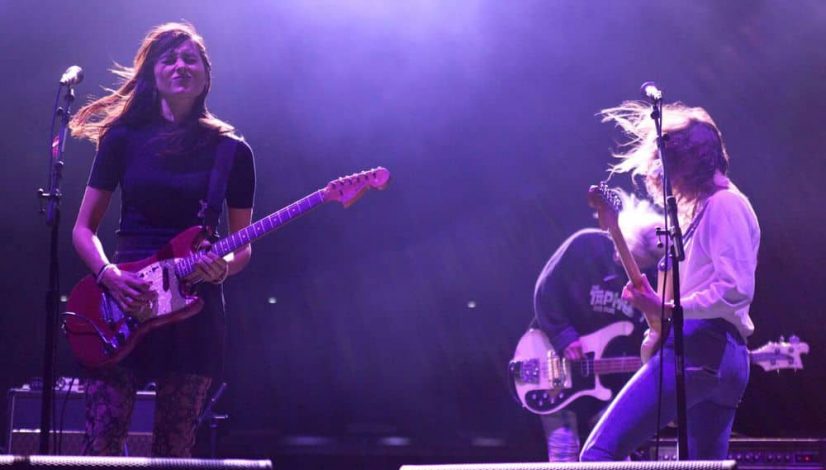Desert Daze is a Place for Transcending Societal Bullshit
Friday, Day I: Rain Impala (By Mary Carreon)
Desert Daze fills a disproportionately large gap in the cosmic world of music festivals. Instead of catering to the mainstream appeal of EDM-heavy dance parties, Desert Daze aligns with an ethos dating back to an era post-Summer of Love but pre-new wave. It’s a festival time-warp back to a period when fringed leather, psychedelic exploration, Les Pauls, and drum solos were inherent details of the culture. And that’s how it felt at Desert Daze a couple weekends ago.
Despite the long wait to get into the festival, day one started out like any other: Attendees were wild, rocking out, and full of drunken vigor. But no one knew what nature had in store. By 4 p.m., clouds rolled in over the lake, reflecting an ominous gray color that illuminated the festival grounds. Still, nothing seemed too out of the ordinary—despite Apple weather predicting rain. But who cares? A little sky water don’t hurt nobody.
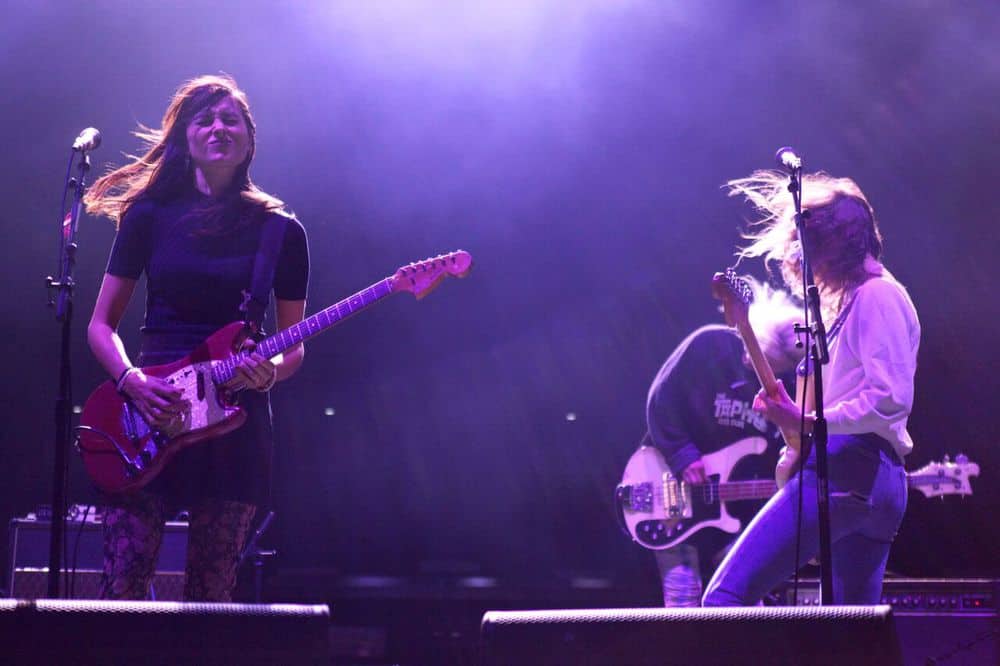
Warpaint; Spencer Strayer
By 7 p.m., the rain made her grand entrance. And let it be known that she didn’t stop anyone from having a good time, especially during Jarvis Cocker’s set. It wasn’t pouring, but no amount of rain could’ve stopped the crowd that gathered for the legendary frontman’s witty banter and soul-jiving performance. His ‘60s shag-cut, matching sienna suit and thick, black rimmed glasses charmed attendees into enduring the weather as if it weren’t raining; as if it were a warm summer night in 1979.
Toward the middle of Cocker’s set, he hopped off the stage and waltzed about in the barrier, interacting with rock star-struck fans. He proceeded to school attendees in a quick philosophy lesson, in which he addressed the crowd asking us what we’re fearful of.
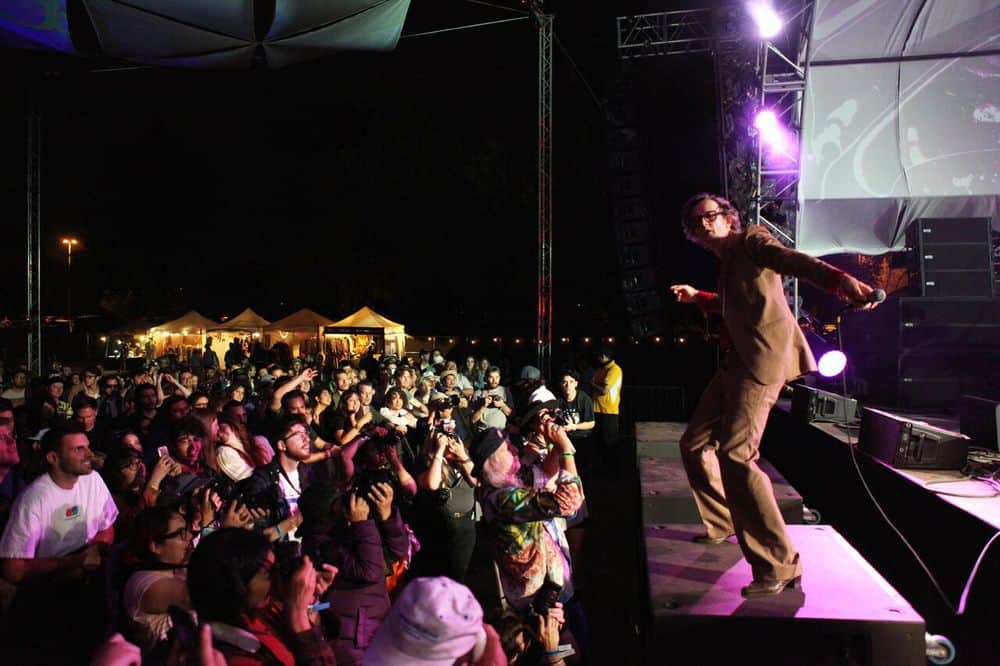
Jarvis Cocker; Spencer Strayer
One squirrelly eyed woman answered his question by nervously exclaiming “YOU” into his microphone. The next man Cocker asked replied “failure;” to which Cocker gave an impassioned speech about the cyclical nature of fearing failure, and it being the reason one can’t start anything meaningful in life at all.
We walked away from the set self-inquisitive about fear– and pumped-as-hell that Cocker performed a few Pulp B-sides. At this point, lightning bolts struck from the heavens behind the mountains across the lake. Warpaint killed their 60-minute set in the stormy conditions, intertwining new songs with jams from Exquisite Corpse and The Fool.
The rain came down harder, and the mushrooms began to reveal their tribal designs—just in time for Tame Impala. Everyone’s leather jackets were soaked. But in the name of rock and roll, it didn’t matter. The lightning beyond the mountains began shifting over the lake. The lights went down and the first notes of the synth filled the air with audible moon-beams. Tame Impala opened with “Let It Happen” which transitioned into “The Less I Know the Better” off Currents. Canons of confetti shot into the crowd, as everyone began to melt away into the ether of modern-day psychedelic rock.
Everything seemed great. But as the confetti settled on the wet ground, frontman Kevin Parker stopped and said: “We have to stop. We’ve been told to leave the stage. We don’t know what’s happening.”
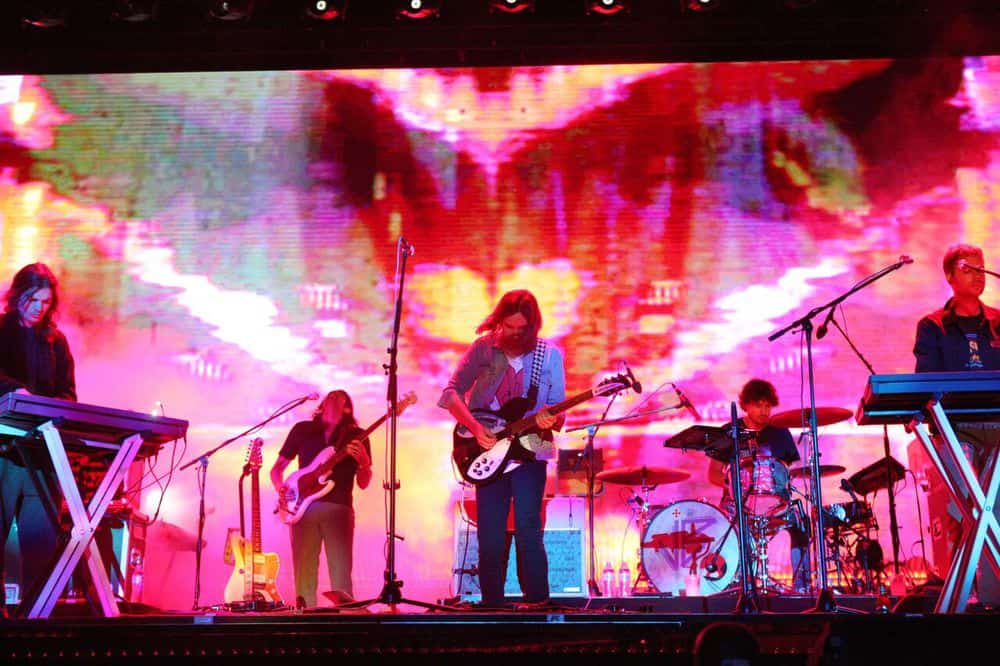
Tame Impala; Spencer Strayer
Lightning flashed above us and lit up the sky as if the sun peeked out. A festival executive grabbed the mic and told everyone to seek shelter. “Do not run,” he said. “Walk. Do not go inside your tent. Do not stand near a tree. If you’re having a medical emergency, please go to the medic tent.”
And just like that Tame Impala evaporated into the night, zapped away from Desert Daze and teleported back to Australia, where the weather was peachy and 80 degrees.
We went to our car and played InnerSpeaker and Lonerism back to back. The patter of rain was incessant as the lightning flashes triggered the crackling sound of thunder that was a three mile count away. The Tame Impala depression sank deep. But at least we were seeking shelter from bad weather, and not a psychotic active shooter.

Spencer Strayer
Saturday, Day II: The Day We Discovered Rolling (By Chloé Gold)
I woke up on Saturday morning in the backseat of my co-workers car—dry, warm, and happy. I had opted to sleep there instead of my tent, which had been set up under a tree; the odds of being struck by lightening are relatively low, but, you know, Murphy’s Law. Plus, it was freezing.
But the festival felt extra fresh after the rain. Everything about that morning was beautiful. Because the festival hadn’t picked up yet, people moved slowly and actually took the time to talk to each other, which feels like a lost art sometimes. But human-to-human interaction is not dead, and Desert Daze proved that.

Spencer Strayer
In fact, an aspect that separates this the festival from the rest is the way it nurtures slowly fading elements of our culture—in-person communication being one of them. The other is literature. The best place in the festival to buy coffee was at a vendor whose coffee booth was also a popup bookstore by Stories Books and Cafe—an independent LA-based shop. They offered book recommendations made by the musicians performing at the festival. The award for best book suggestion goes to Jarvis Cocker for endorsing the American Constitution; because America needs to revisit the fundamentals.
Complex, trippy art that could fill an exhibit on Jupiter dotted the grounds. And the longer you stared at them, the more extraterrestrial they became. LSD day-trippers slurping Otter Pops sat underneath glittering ornaments hanging inside dome structures. They sat in circles, like an ad hoc support group that aided first time trippers through their psychedelic adventures. A cone-shaped shelter with naked Barbies, dismembered Ken figurines, and baby dolls tied to multi-colored, thread-woven walls provided shelter for attendees.
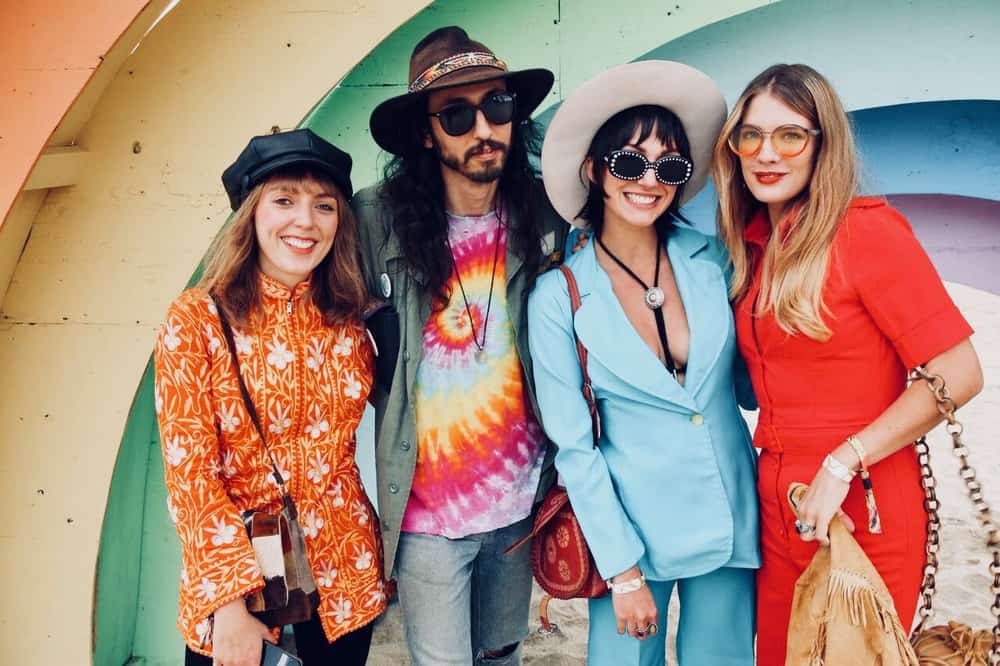
Spencer Strayer
The sky in Lake Perris—or anywhere, really—is dim compared to Joshua Tree’s Milky Way painted atmosphere. But there’s something about absorbing the energy of a eerily still, serene lake in the night while the chaos of a festival is spinning around you. There’s also the prehistoric vibrations of the lake and the silhouette of the mountains in the distance; it was enough to guide my mushroom-laced mind to Lovecraftian thoughts of Loch Ness lore.
During this period of reflection it occurred to us that the ‘60s and ‘70s were a balance of darkness and light—despite the glamorization of those decades. That time personified the theory of yin and yang: the yang being war, hate, and the political strife that plagued the era; and the former representing the yin—the mind-melting, potent music that unified the masses.
Music functioned as a crutch to society. It was one of the few outlets people had that made those times a bit less bleak. Music transcended the racism, inequality, and overall hate of the era. And that’s basically what Desert Daze gives to us. It creates a space where gender, political party, education, biases, and societal problems evaporate in the name of music. Perhaps it’s because the energy of the festival vibrates too high for such low-vibe frequencies to exist. Or perhaps it’s because music is a higher power.
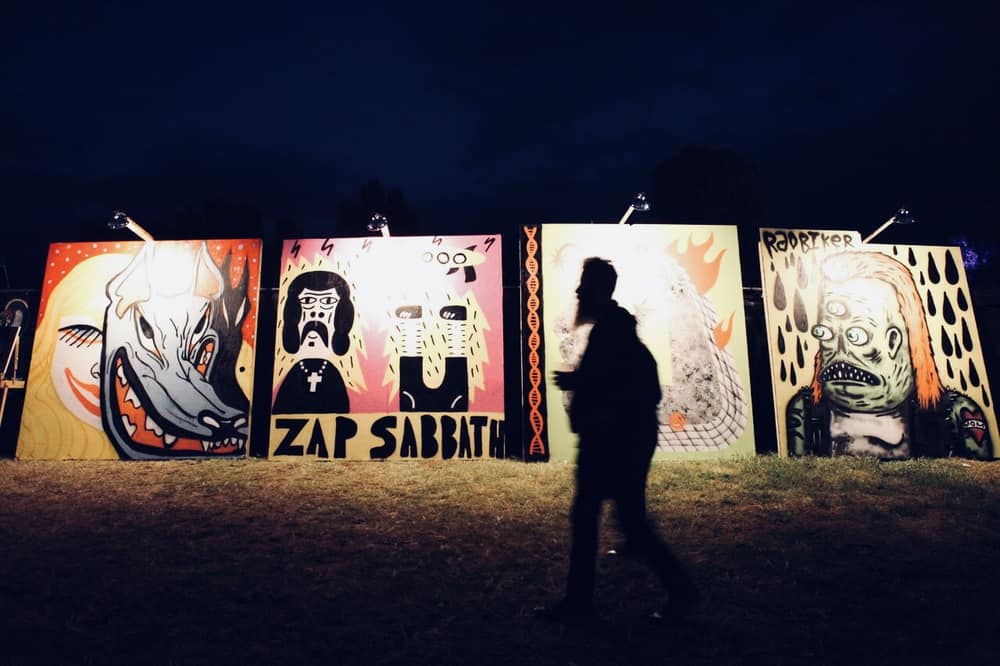
Mind melt; Spencer Strayer
Sure, it’s arguable that all music festivals act as a crutch for us. But Desert Daze—more than any other fest—feels so much like the golden-era of music, it’s nearly impossible to ignore the parallels of style, genres, art, substances, and external political chaos we’re currently enduring as a nation.
Our musings about cryptids and the fact the society needs a festival like Desert Daze were cut short by two girls scream-laughing and rolling around in tandem in the sand directly in front of us. I never understood why the slang for being high on MDMA was called “rolling”—until that moment.
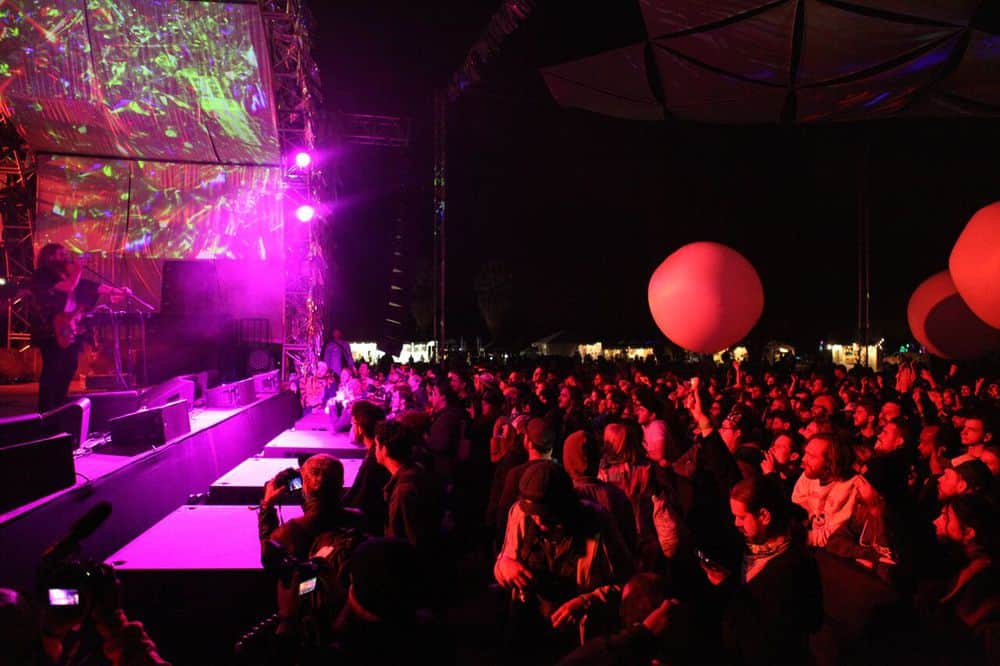
JJUUJJUU; Spencer Strayer
“How sandy are you guys?” a tall man with a bun yelled to them.
“Soooo sandy!” One of them answered, as she wiped off her chest and posterior before dissolving into another raging fit of giggles.
Despite the hiccups, Desert Daze is the festival that provides rock and roll lovers a glimmer of hope. Hope for a community of like-minded people; hope for a place to transcend the political bullshit infiltrating our lives from every angle; and hope for an environment that gives the art of music—real music—a chance to live and thrive. And because of that, Desert Daze’s transformation from a boutique festival into a large-scale event will be undoubtedly successful.
The post Desert Daze is a Place for Transcending Societal Bullshit appeared first on High Times.

